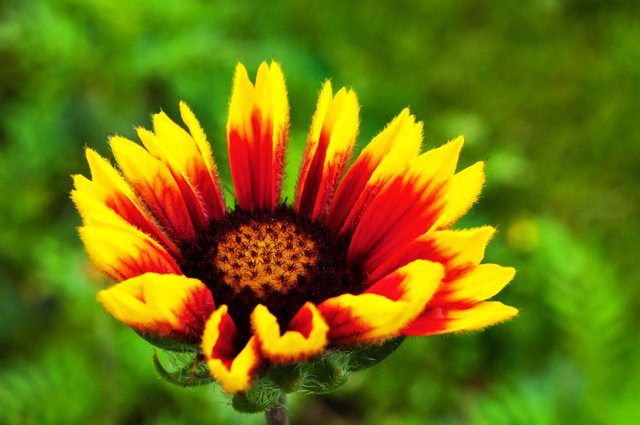Bulbs
Flower Basics
Flower Beds & Specialty Gardens
Flower Garden
Garden Furniture
Garden Gnomes
Garden Seeds
Garden Sheds
Garden Statues
Garden Tools & Supplies
Gardening Basics
Green & Organic
Groundcovers & Vines
Growing Annuals
Growing Basil
Growing Beans
Growing Berries
Growing Blueberries
Growing Cactus
Growing Corn
Growing Cotton
Growing Edibles
Growing Flowers
Growing Garlic
Growing Grapes
Growing Grass
Growing Herbs
Growing Jasmine
Growing Mint
Growing Mushrooms
Orchids
Growing Peanuts
Growing Perennials
Growing Plants
Growing Rosemary
Growing Roses
Growing Strawberries
Growing Sunflowers
Growing Thyme
Growing Tomatoes
Growing Tulips
Growing Vegetables
Herb Basics
Herb Garden
Indoor Growing
Landscaping Basics
Landscaping Patios
Landscaping Plants
Landscaping Shrubs
Landscaping Trees
Landscaping Walks & Pathways
Lawn Basics
Lawn Maintenance
Lawn Mowers
Lawn Ornaments
Lawn Planting
Lawn Tools
Outdoor Growing
Overall Landscape Planning
Pests, Weeds & Problems
Plant Basics
Rock Garden
Rose Garden
Shrubs
Soil
Specialty Gardens
Trees
Vegetable Garden
Yard Maintenance
Low Growing Perennials
Low-growing perennials are ideal for tiny areas and in the front of flowerbeds. These plants add color and visual interest to any outdoor space.
When it comes to choosing perennials for small spaces, your options are more varied than you may initially think. With choices ranging from flowering plants to dwarf shrubs and ornamental grasses, you can add form and function without resorting to tall plants. Low-growing perennials are ideal for filling small spaces, the front of landscape beds and along walkways, driveways and garden steps.
Flowering Herbaceous Varieties

Low-growing flowering herbaceous perennials brighten tight spaces and the fronts of flowerbeds with colorful blooms. Choose from the many low-growing flowering perennials, including:
Blanket flower (Gaillardia x grandiflora), which has daisylike blooms. Blanket flower varieties bloom from
early summer through early autumn, adding colors such as yellow, orangeand red to the garden. Look for dwarf varieties that grow 10 to 12inches tall. For example, the cultivar 'Sunset Cutie' (Gaillardia x grandiflora 'Sunset Cutie') reaches a height of 12 inches with an 18-inch width or spread. It is a perennial, or hardy, in U.S. Department of Agriculture plant hardiness zones 5 through 9, doing well in a site exposed to full sun.
'Kim's Knee High' purple coneflower (Echinacea purpurea 'Kim's Knee High'), a dwarf variety that typically grows quickly to a height and width of 2 feet. Its rose-pink flowers add color while attracting butterflies throughout summer. It is hardy in USDA zones 4 through 9 and grows well in areas with full-sun exposure.
'Little Lanterns' columbine (Aquilegia canadensis 'Little Lanterns'), which adds a splash of color to shady areas. Growing 12 to 18 inches tall, it flourishes in full to partial shade, where from mid-spring to midsummer its vivid red and yellow flowers attract hummingbirds. It is hardy in USDA zones 3 through 8.
Dwarf Shrubs

Just because you want something compact doesn't mean you're limited to only flowering herbaceous perennials. Dwarf shrubs provide visual interest that contrasts with flowers and ground covers. Options include:
Cranberry cotoneaster (Cotoneaster apiculatus), a shrub that grows about 3 feet tall and 6 feet wide, making it suitable as a low-growing hedge. Its spreading branches create a herringbone pattern, and it has tiny, pink flowers in spring. During winter, this deciduous shrub has lost its leaves but is adorned with red berries. Hardy in USDA zones 4 through 7, cranberry cotoneaster grows best in full to partial sun.
'Goldflame' spirea (Spiraea x bumalda 'Goldflame'), a low-maintenance cultivar that grows 3 to 4 feet tall and has pink flowers throughout summer. This deciduous shrub's foliage starts as a bronze color and matures to a yellowish-green, followed by a copper color in fall. Hardy in USDA zones 4 through 9, 'Goldflame' is heat-tolerant and grows best in areas with full sun.
Ornamental Grasses
Ornamental grasses add a whimsical touch to flowerbeds, and their arching leaves or blades provide a contrast or backdrop for flowering plants. Low-growing varieties include:
Variegated Japanese sedge (Carex morrowii 'Aurea variegata'), which grows about 1 foot tall and wide. This evergreen grass features shiny, green blades with creamy yellowish-white stripes. It requires full to partial sun exposure and is hardy in USDA zones 5 through 9.
'Bolder Blue' fescue (Festuca glauca 'Boulder Blue'), an evergreen that features dark, metallic blue blades. This tidy-looking specimen grows quickly to a height of 8 inches with a similar spread. It is hardy in USDA zones 4 through 9, growing well in areas with full-sun exposure.
Ground Covers
Ground-cover plants can be used to line walkways, fill the cracks between flagstones or even in place of grass. These low-growing perennials are available in a variety of colors, textures and growth habits, allowing you to choose the plant that works best for your needs. Options to consider include:
Miniature brass buttons (Leptinella gruveri), a fast-grower that reaches a height of only 1 inch and a spread of 8 to 12 inches. This evergreen fills areas quickly and helps keep out weeds. Miniature brass buttons grows well in areas with partial sun or full shade. It has inconspicuous green flowers in summer, and it is hardy in USDA zones 7 through 9.
'Baby Tears' stonecrop (Sedum album chloroticum 'Baby Tears'), which grows 4 to 6 inches tall with a 12-inch spread. This drought-tolerant evergreen belongs to the succulent family and is hardy in USDA zones 4 through 9. It displays white flowers from late spring through summer. Use it along pathways and in rock gardens, where its rosettes of teardrop-shaped foliage contrast with the surrounding hardscape.